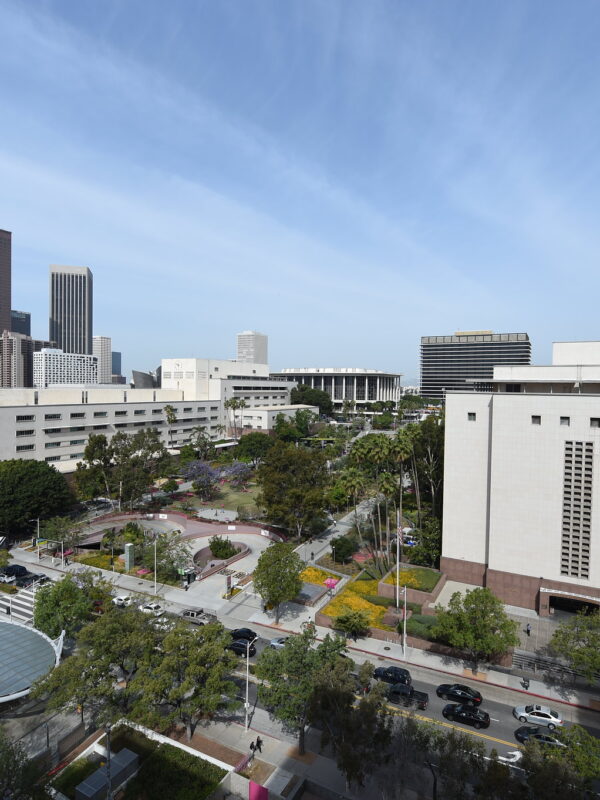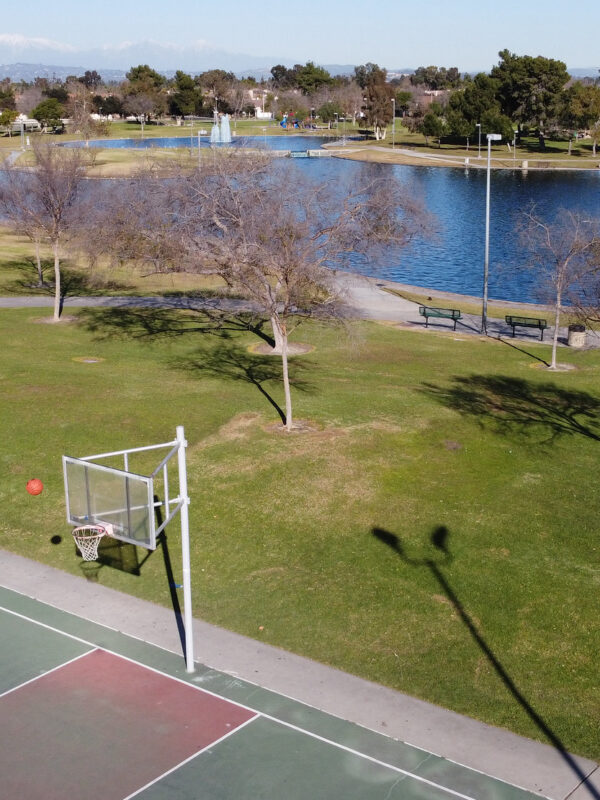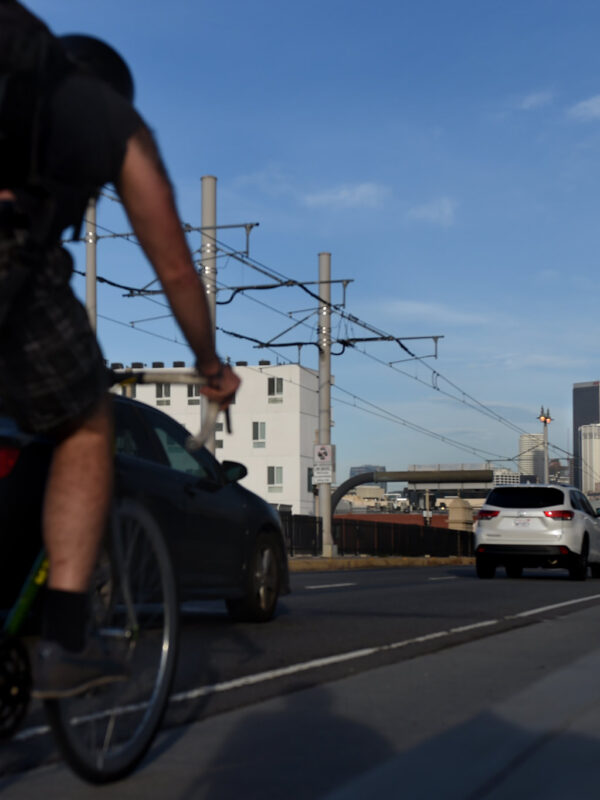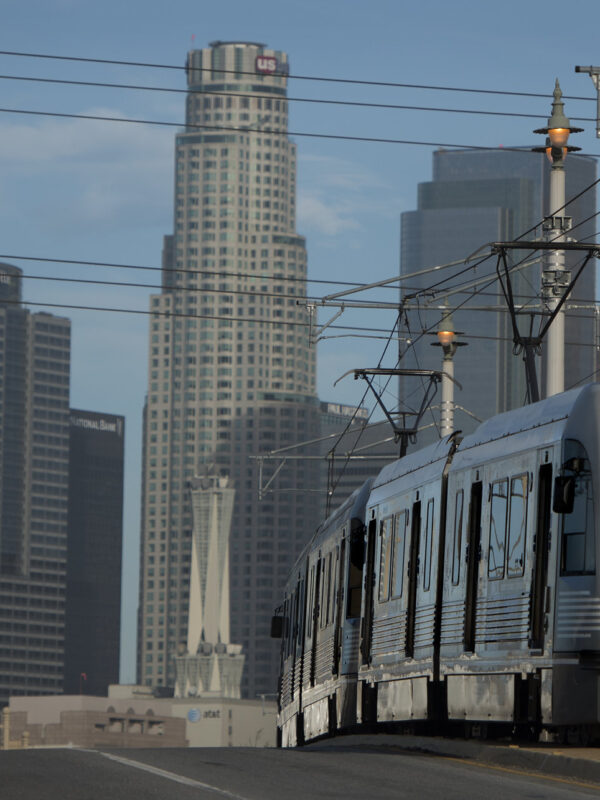Equity in the Built Environment
Conditions in the built environment affect all communities. For instance, sidewalks connect people to work, school, stores, and each other. The absence of sidewalks, crosswalks, and other design elements can shape the demographics of a city and isolate a neighborhood from those surrounding them,1 contributing to negative life outcomes. The lack of electric vehicle chargers or “charging station deserts” in neighborhoods where residents lack driveways or garages and rely on street parking, keeps Black and Latino communities disproportionately exposed to air pollution and depending on gasoline powered cars.2 As such, infrastructure systems, policies, procedures, and practices must focus on improving life outcomes and treating every one justly according to their unique circumstances and needs. Prioritizing equity in the built environment will strengthen all LA County communities by enabling residents to have equal access to education, energy, clean drinking water, and resources that communities need to thrive.3 ARDI’s built environment portfolio focuses on prioritizing equity in infrastructure including but not limited to stakeholder engagement and data-driven decision-making processes to invest in our communities. ARDI supports the infrastructure work led by County departments and supports the implementation of specific Board directives.
1 Architectural Exclusion: Discrimination and Segregation Through Physical Design of the Built Environment
2 Without access to charging stations, Black and Hispanic communities may be left behind in the era of electric vehicles
3 Examining social equity in infrastructure

Civic Center in Downtown Los Angeles

Don Knabe Community Regional Park
Equity in Infrastructure Initiative
led by Public Works
On August 10, 2021, the LA County Board of Supervisors adopted a motion establishing a commitment to addressing infrastructure inequity, seeking to accelerate the County’s Anti-Racism policy agenda, specifically as it relates to infrastructure investments overseen by Public Works. In response to the Board’s directive, the Equity in Infrastructure Initiative is changing the way Los Angeles County Public Works serves its communities. This Initiative is prioritizing equity in all of Public Works’ infrastructure delivery and services. Through this important work, Public Works will build a more accessible and more resilient Los Angeles County.
For more information on the Equity in Infrastructure Initiative, contact Richard Gomez, Senior Civil Engineer from Public Works: RGOMEZ@dpw.lacounty.gov
Decriminalizing Mobility
led by ARDI
In 2021, data analyzed by the Los Angeles Times revealed that out of more than 44,000 bicyclists stops made by the Los Angeles County Sheriff’s Department since 2017, 70% involved Latino bicyclists. However, only 8% of the searches conducted during these stops resulted in finding illegal items, and 0.5% resulted in seizing weapons. These stops also occurred at greater rates in communities of color, such as unincorporated East Los Angeles, when compared to more affluent neighborhoods throughout the County. On August 2, 2022, the LA County Board of Supervisors adopted a motion directing the Chief Executive Office to coordinate the implementation of recommendations proposed in the June 24, 2022, Chief Executive Office report entitled “Decriminalizing Mobility Through Implementation of the Vision Zero Action Plan.” ARDI is coordinating efforts to decriminalize mobility in response to the Board directives by working with Public Works, Beaches and Harbors, County Counsel, Sheriff’s Department, Office of Inspector General, Civilian Oversight Commission, Legislative Affairs and Intergovernmental Relations Branch, and community representatives to decriminalize bicycle riding and micromobility in unincorporated areas of Los Angeles County, including Marina del Rey.
For more information on Decriminalizing Mobility, contact ardi@ceo.lacounty.gov.

First Street Bridge in Downtown Los Angeles

First Street Bridge in Downtown Los Angeles
Bipartisan Infrastructure Law
led by Public Works
On November 15, 2021, the President signed the Bipartisan Infrastructure Law (BIL), allocating approximately $1 trillion to water, transportation, broadband, electrical grid infrastructure, and environmental remediation throughout the country over the next five years. On April 5, 2022, the Board of Supervisors launched the Infrastructure Initiative in order to maximize the County’s share of federal infrastructure spending available through the BIL for regional and unincorporated areas, with an emphasis on projects that advance the Board of Supervisor’s equity, sustainability, and climate resilience goals.
For more information on Bipartisan Infrastructure Law, contact TJ Moon, Principal Engineer from Public Works: TMOON@dpw.lacounty.gov

